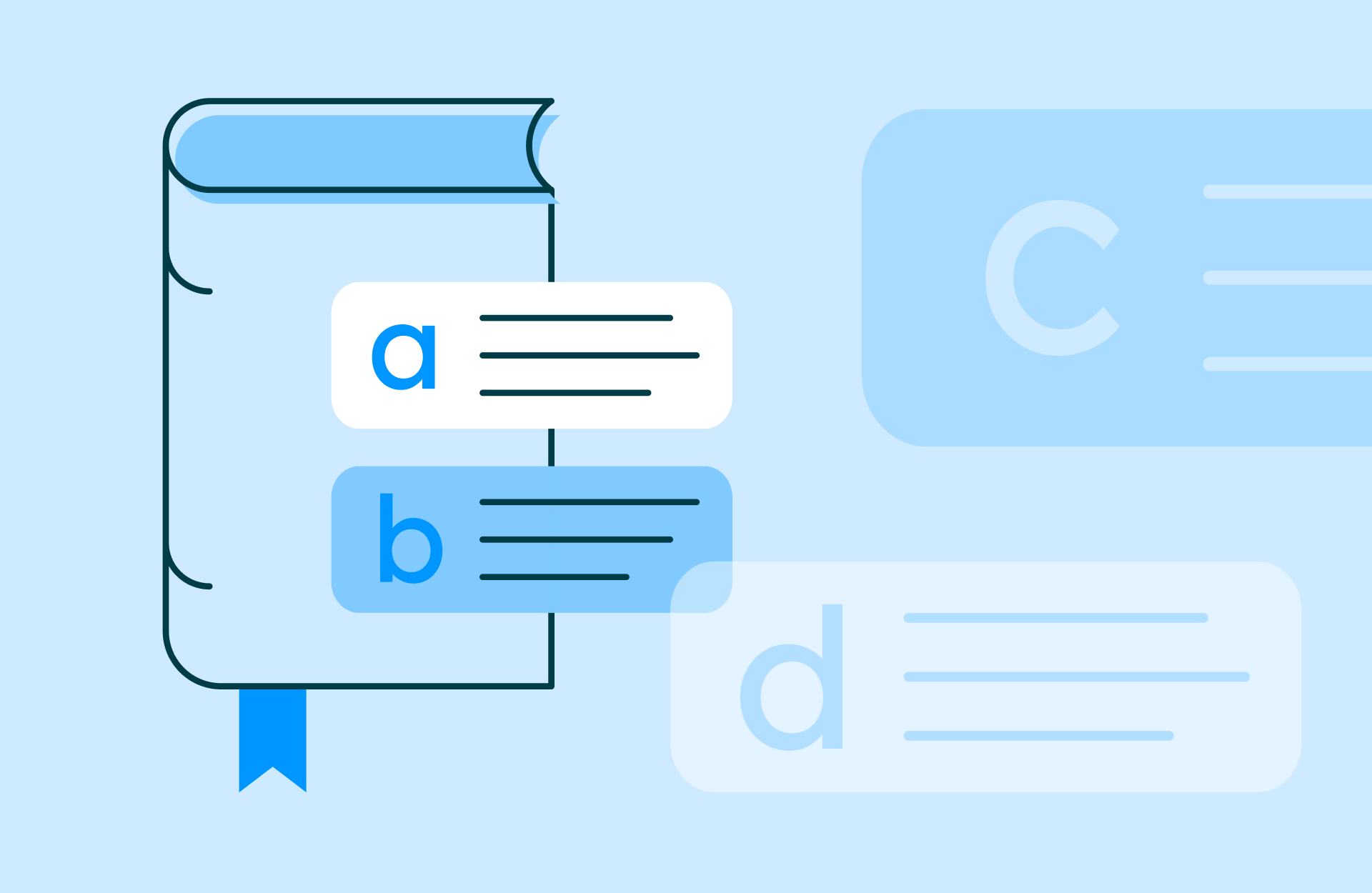The learning journey is different for all our readers and customers. As we work to bring integrity to every type of assessment, we’d like to take a moment to provide a helpful glossary of terms for Turnitin’s assessment with integrity.
Formative assessmentFormative assessment is a communication loop that provides feedback to students and data to educators in order to help students further their learning and understanding of concepts. It is often considered an important part of teaching and learning. Some examples of formative assessments may include quizzes, essay first drafts, or homework assignments; however, almost any artifact of learning can be used in a formative assessment loop that guides students next steps and helps instructors understand what needs additional review.
Summative assessmentSummative assessment is an evaluative exercise to measure progress and learning, often at the end of a unit or term. An example of summative assessment is a final exam, certification exam, or even a midterm exam without feedback.
High-stakes assessmentThe results of a high-stakes assessment informs whether or not a student is cleared for the next level of courses, completing a program, or receiving certification. In some cases, the assessment is based on set standards or outcomes developed by a third party and carried out under proctored situations. Examples of high-stakes assessment include a course final exam, standardized testing in secondary education, and certification testing such as for nursing.
Low-stakes assessmentForms of evaluation that don’t deeply affect a student’s final course grade or other outcomes, otherwise known as low-stakes assessments, are an effective way to support students and uphold the learning process. While they still measure student knowledge, they do not keep students from moving forward if they don’t excel at low-stakes assessments. Low-stakes assessments are critical opportunities for teacher intervention.
Self assessmentSelf assessment involves assignments in which students are a judge of their own work and determine what it is they need to improve. It is often a critical step in self-directed learning and fosters student reflection.
Peer assessmentAlso known as peer review, peer assessment provides a structure for students to critique and provide feedback to each other on their own work. It is known to help students manage their own learning and enhance learning through the exchange of ideas.
Qualitative assessmentQualitative assessment involves analysis used to tell a story or demonstrate understanding of concepts. Observations can be subjective. An example of qualitative assessment includes essay questions.
Quantitative assessmentQuantitative assessment focuses on numbers or quantities to illustrate a student’s understanding of concepts–they often have a “right or wrong” response. Some examples of quantitative assessment questions include:
- 5+4 =9
- What is the capital of Bolivia? (Sucre)
Authentic learning connects teaching to real-life situations, making course content relevant to students. Authentic assessment, in kind, asks students to perform real-world tasks that demonstrate their knowledge of course content. An example of authentic assessment includes lab projects.
RubricA rubric is a set of scoring guidelines for an assignment or test. Effective rubrics can also provide formative feedback and guide student learning.
GradingGrading is a subset of assessment and is the act of scoring student work against a set of criteria. Best practices in grading include providing formative feedback to students.
Higher-order thinkingBased on Bloom’s Taxonomy, higher-order thinking is being able to analyze, evaluate, and create, moving beyond memorization of facts.
Student-centered assessmentStudent-centered assessment is a term that is often used and is still being standardized. Some common uses of the term include:
- Assessing students according to their passions and interests. One example is allowing students to pick which piece of literature they’d like to read and then analyze.
- Student-centered assessment is also a term that encompasses self-assessment and peer-assessment, both of which directly put learning in the hands of students.
Aligning course curriculum, course instruction, and assessment is critical to fair and accurate assessment. When educators test what is taught and teach what will be tested, this is an example of fairness and curriculum alignment, thus promoting assessment with integrity.
Learning outcomesLearning outcomes are the stated goals of a course. At the beginning of a course, it describes the knowledge and skills a student should know and be able to do by the end of a course. At the end of a course, it can be described as the result of the learning journey.
Grading on a curveWhen teachers adjust student scores relative to the entire class’ s performance, they are grading on a curve. The “curve” refers to the bell curve, used in statistics to illustrate “normal distribution,” with most of the data in the middle. Grading on a curve may improve students’ scores when an assessment proves difficult but can also restrict the number of students who excel and thus pit students against each other.
Item analysisItem analysis is the act of analyzing individual student responses in order to evaluate the quality of an exam. It can provide feedback to the instructor to inform future teaching and help uphold exam fairness.
End-to-end assessmentEnd-to-end assessment encompasses the entire student learning journey, from low-stakes assessments to formative assessments and summative assessment.
Assessment with integrityAssessment with integrity is the act of ensuring fair and accurate measurement of student learning. For example, summative exams preceded by frequent, low-stakes formative assessments support the student learning journey. Exams aligned with course content, too, reflect assessment with integrity in their fairness. Bias can be mitigated by thoughtful exam design and item analysis as well. And students who provide answers based on their own ideas also uphold assessment with integrity.
When every assessment has been constructed and completed with integrity there aren’t concerns about whether the student did the work or has demonstrated that they learned the concepts for the assigned degree or course grade.
From Draft Coach that helps students as they write, to Feedback Studio’s feedback and similarity detection functions, to Gradescope’s fair and fast grading, as well as ExamSoft and ProctorExam’s functions in summative assessment, we aim to support the entire student learning journey at Turnitin. Our products are designed to uphold best practices in assessment and enable educators to connect teaching and learning; this glossary, we hope, helps your journey.





